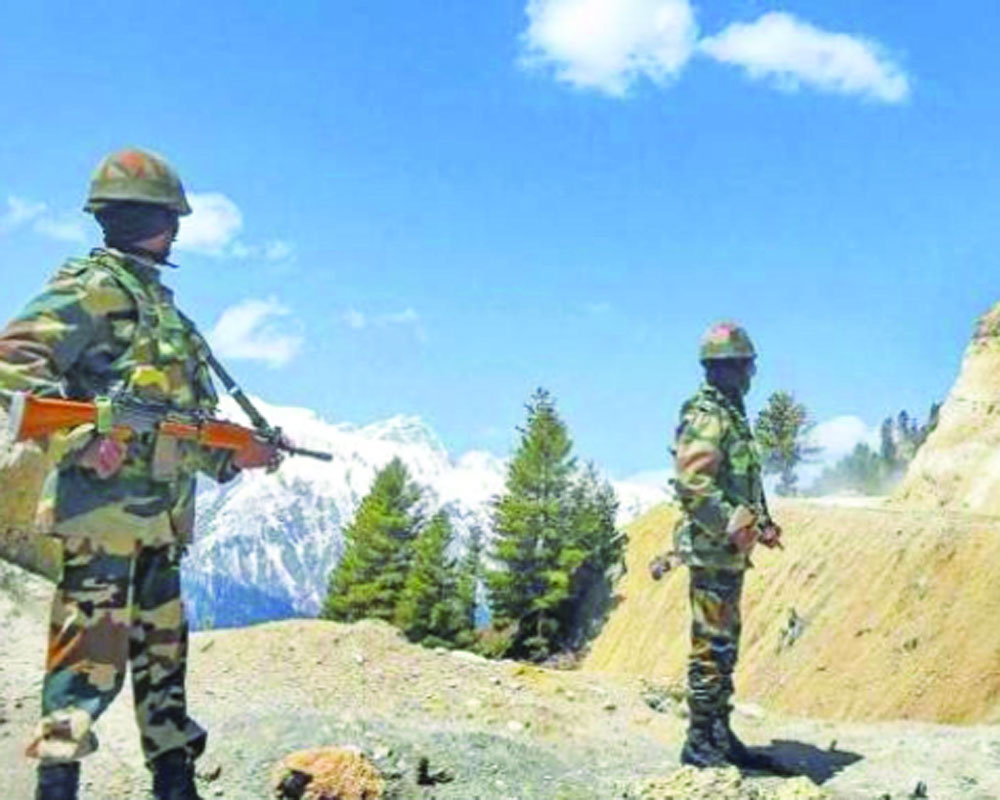China withdraws from Galwan but without agreeing to the definition of LAC on the ground, it won't give up landgrabs
This seems uncannily familiar, the simmering down of tension at one end and a niggling pain surfacing at the other. The Chinese have withdrawn a kilometre from Galwan Valley after special representatives of both nations — National Security Adviser (NSA) Ajit Doval and China’s Foreign Minister Wang Yi — agreed to disengage, respect the status quo on the Line of Actual Control (LAC), not seek to change it unilaterally and not threaten each other’s sovereignty. Even as the grand declaration was made, Bhutan, another of our natural allies, raised a hue and cry about Chinese intrusion into its wildlife sanctuary in a forested terrain. And in a veiled reference to India, China warned against third-party interference. So it looks like both India and China have been pragmatic rather than progressive at the moment. Both did not want a Siachenisation in Ladakh, or a prolonged vigil and confrontationist mode in the icy heights (15,000 to 17,000 ft) that would cost both nations men and resources, unwise in a pandemic-hit economy. But that doesn’t mean China won’t continue using low-key frontier strategies as it has done in Bhutan. The official statement said that the two sides decided to “take guidance from the consensus of leaders,” implying a political understanding that would suit each other in post-pandemic realignments. It also adroitly separates the military leadership from the political, suggesting that the Wuhan spirit of summitry between Chinese President Xi Jinping and Prime Minister Narendra Modi had not exactly waned and the two leaders could settle if they wanted to, thereby legitimising a wiggle room for backroom negotiations. Question is at what cost and to whom. Modi, who dilly-dallied quite a bit on China’s militaristic zeal in controlling the Himalayan highs and finally called out its expansionism, albeit without mentioning Beijing by name, needed a face-saver. After all, despite his admiration for the monolithic matrix of China, his personal initiative in engaging with it had only given him more pain than gain. Wolf warrior China has used the civilisational contiguity card to its advantage, be it by stepping up territorial encroachments all along the LAC, deepening its hold on our economy or driving our digital revolution. Besides, for all his assumption of martial valour to protect national honour, one that he deployed effectively against Pakistan, he had seemed tongue-tied about the loss of 20 soldiers at Galwan. And truth be told, our forces could pay back the People’s Liberation of Army (PLA) in its same coin only because of their operational preparedness and now improved skills of mountain warfare. Modi couldn’t have ignored the local military command’s views on holding on to strategic gains and was undoubtedly bolstered a great deal by support from democratic nations, particularly the US, in taking the stand that India would not concede land under Chinese hegemonistic pressures. By visiting the frontline just a couple of days before Chinese withdrawal, he has been able to revive the “muscular leadership” card. For Chinese President Xi Jinping, having already lost world opinion for hiding the contagion and now newer viral outbreaks, this diversion in India, along with strong-arming in Taiwan, the Philippines and Hong Kong, helped him project himself as a protector of Chinese interests. By creating a new crisis point, Xi could hijack the discourse on joblessness (20 per cent of Chinese have lost jobs already) and increasing domestic dissent and frustration. Besides, through his militaristic flexing, he meant to warn India about becoming too pro-American and not forget its economic dependencies yet. Internationally, he knew he could not win the game of perception. He, therefore, played his strengths in the neighbourhood as leader of an Asian century. But without some congruencies with India, the second biggest Asian power, if not compliance, China would not be able to convince others. Xi, therefore, just played us, skirting the threshold of war without making either Modi or himself look bad.
Modi has said there will be no tradeoff but he must remember Doklam. The Chinese retreated a bit there, too, so that he could address his domestic politics with his claims that his summit with Xi worked but over time, they have intensely fortified their positions. So yes, the Galwan truce might just be temporary as China won’t give up its territorial claims over what it has bitterly fought for historically. It wouldn’t want any challengers to its geo-strategic relevance in Aksai Chin. There have been reports of ingress attempts in Uttarakhand even as the Ladakh de-escalation talks were on. Similar inroads have been reported from Kinnaur in Himachal Pradesh, too. We should be wary of the fact that the PLA, which has been pitching tents, building roads and marking territories since 2013 and which directly takes orders from Xi himself, may lie low but not go silent. China itself has never shown any eagerness to actually delineate the LAC on the ground despite India’s persistent attempts to do so. Agreed, this is not an easy job considering the fluid colonial era maps of the Himalayan terrain that are needed for reference and which kept changing according to who had the prime positions at a particular time in history. But without defining the LAC, there will be no end to China’s claims.




















